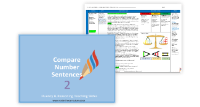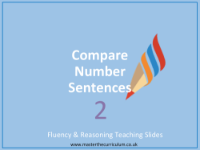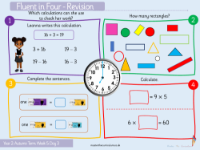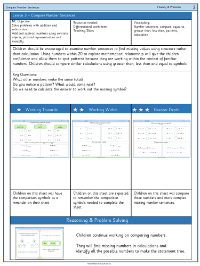Addition and subtraction - Compare number sentences - Planning
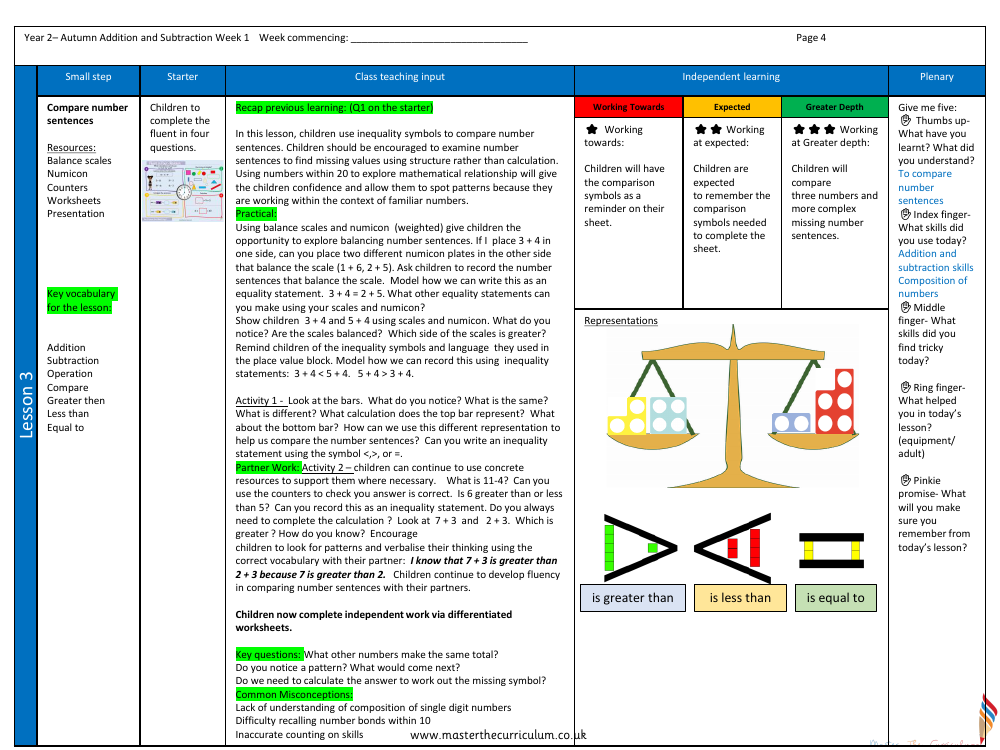
Maths Resource Description
Year 2 students are introduced to the concept of comparing number sentences in a lesson that utilises practical and visual methods to support their understanding of addition and subtraction. The lesson begins with a starter activity where children answer questions to recap on their previous knowledge. The core of the lesson involves using inequality symbols to compare the value of different number sentences. Children are encouraged to look for structural patterns within the numbers rather than performing the calculations straight away. With numbers within 20, they explore mathematical relationships, which helps build their confidence as they work within a familiar numerical context. Practical activities include using balance scales and weighted numicon to visually demonstrate equality and inequality, with children recording their findings and forming equality statements. This hands-on approach helps them to grasp the concept of comparing quantities and the use of symbols such as greater than, less than, and equal to.
As the lesson progresses, students engage in activities that further develop their ability to compare number sentences. One activity has them examining bars that represent different calculations, prompting them to identify similarities and differences and to write corresponding inequality statements. Partner work encourages collaboration and verbalisation of their thought process using the correct mathematical vocabulary. This interactive learning is designed to enhance fluency in comparing number sentences. Independent learning is facilitated through differentiated worksheets that cater to varying levels of understanding. The lesson concludes with a reflective 'Give me five' exercise where students identify what they've learned, the skills they've used, and what they found challenging, ensuring they remember the key points from the lesson. Differentiated expectations are set for students working towards the expected level, at the expected level, and at greater depth, with each level providing appropriate challenges to support learning progression.
